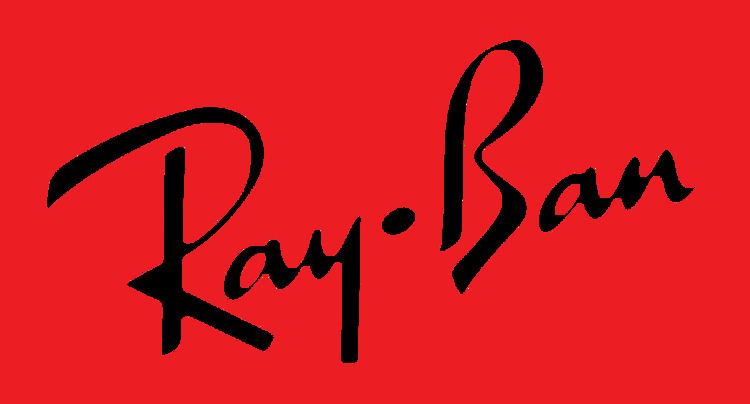Owners Luxottica | Number of employees 55,000 | |
 | ||
Founded 1937; 80 years ago (1937) Headquarters Bentonville, ArkansasFormerly Rochester, New York, United States | ||
Ray-Ban is a brand of sunglasses and eyeglasses founded in 1937 by the American company Bausch & Lomb. The brand is best known for their Wayfarer and Aviator styles of sunglasses. In 1999, Bausch & Lomb sold the brand to the Italian Luxottica Group for a reported $640 million.
Contents
History
In 1929, US Army Air Corps Lieutenant General John MacCready asked Bausch & Lomb, a Rochester, New York-based medical equipment manufacturer, to create aviation sunglasses that would reduce the distraction for pilots caused by the intense blue and white hues of the sky. Specifically, MacCready was concerned about how pilots' goggles would fog up, causing pilots to become blind at high altitudes. The prototype, created in 1936 and known as ‘Anti-Glare’, had plastic frames and green lenses that could cut out the glare without obscuring vision. They also added impact-resistant lenses in 1938. The sunglasses were remodeled with a metal frame the following year and patented as the 'Ray-Ban Aviator'. According to the BBC, the glasses used, “Kalichrome lenses designed to sharpen details and minimise haze by filtering out blue light, making them ideal for misty conditions.” In 1952, Ray-Ban created the Ray-Ban Wayfarer, using plastic frames. The now-standard G-15 green and gray lenses were introduced a year after the Wayfarer, in 1953. In 1965, the Olympian I and II were introduced; they became popular when Peter Fonda wore them in the 1969 film Easy Rider. In 1999, the Global Eyewear Division of Bausch & Lomb, including Ray-Ban, was acquired by Luxottica Group for $640 million.
Sunglasses lines
The main sunglasses lines of Ray-Ban are the Wayfarers, founded in 1952, and the Aviators, which originally came with green and grey lenses. During the 1950s, Ray-Ban also released the Ray-Ban Caravans, a squarer looking frame. It was also popular during the 1970s, worn by Robert de Niro in the film Taxi Driver. Regardless, the aviators frame have remained the most popular style of Ray-Ban through the years. The company has also produced special edition lines, such as the 1987 line The General, harkening back to the original aviators worn by General Douglas MacArthur during the Second World War. Three other models of the brand are named Clubmaster, Round, and the most recent one Clubround.
Polarized lenses
Ray-Ban polarized sunglasses have the transmission axis oriented vertically to block reflecting light. Polarized lenses are also appropriate for indoor use and can be worn by people whose eyes are light-sensitive; including post-cataract surgery patients and those continually exposed to bright light through windows. They may reduce the visibility of images produced by liquid crystal displays (LCDs) found on the dashboards of some cars or in other places such as the digital screens on automatic teller (bank) machines.
Photochromic lenses
Photochromic lenses (or "transitional lenses") are clear while indoor and automatically darken when exposed to sunlight. These lenses allow for full ultraviolet radiation protection. Photochromic lenses are convenient as they reduce the need to switch from outdoor prescription sunglasses to indoor prescription glasses. They come in a wide variety of lens materials.
